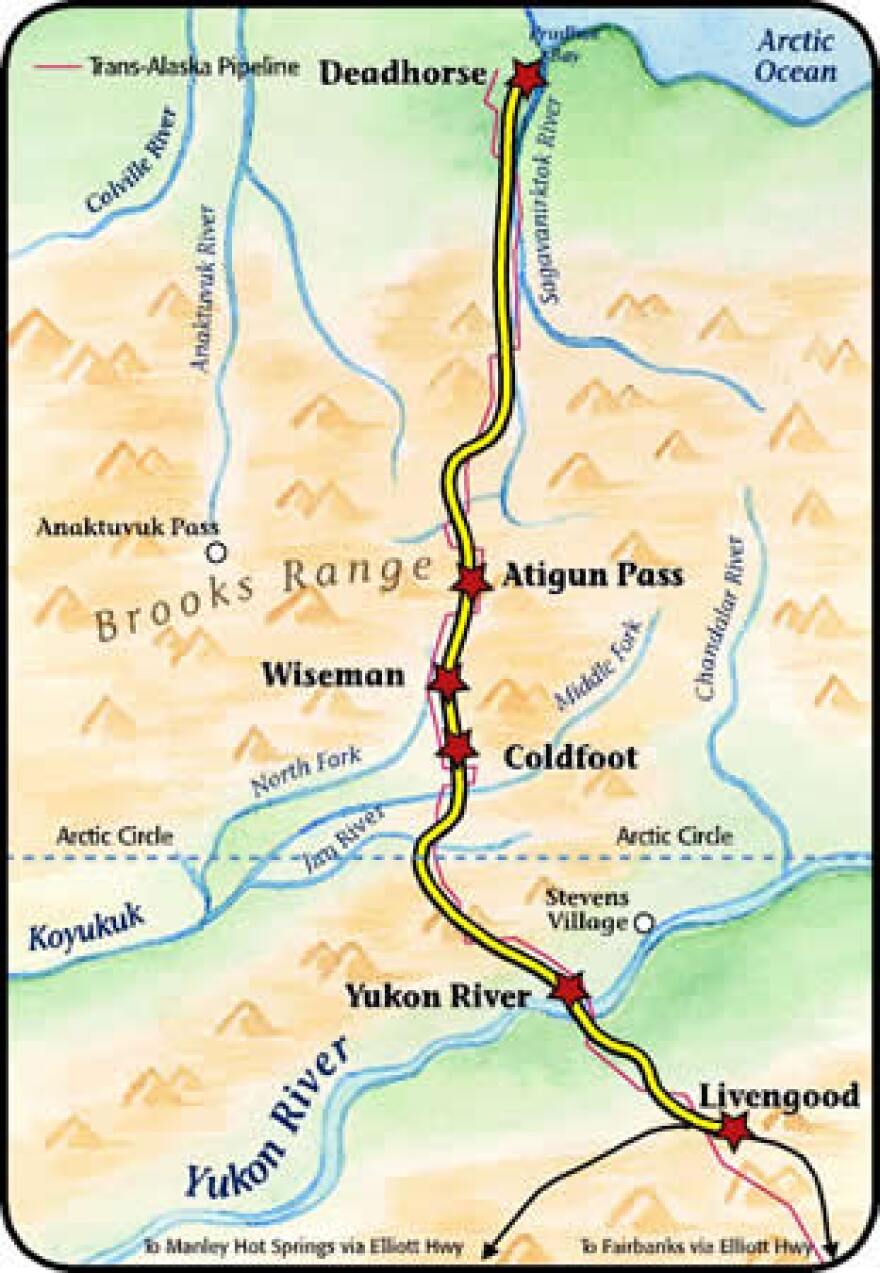Work is wrapping on a project to rebuild the northernmost stretch of the Dalton Highway that was badly damaged two-and-a-half years ago by flooding from the overflowing Sagavanirktok River. Once that and two other road-improvement projects on that part of the Dalton are all complete, the state plans to pave the 52-mile stretch of the road.
The contractor hired to reconstruct the 17-mile stretch of the Dalton Highway south of Deadhorse raised the level of the roadway by nearly five feet in areas damaged by flooding in the spring of 2015 by the Sagavanirktok River, also called the Sag River.
“What happened was the Sag River overflowed its banks, after several days of icing. There were some very quick-warming temperatures, and some flooding that shut down the roadway,” said Mike Lund, the State Department of Transportation’s construction manager.
Lund says the project contractor, Anchorage-based Brice Incorporated, had to haul in some 2.4 million tons of gravel needed to build-up that stretch of Dalton. That’s enough to fill some 120,000 side-dumper trucks. It’s one of three projects worth a total of $109 million that are under way on the Dalton from Pump Station 2 to Deadhorse.

“Eventually, over the next few years, we intend to actually pave this roadway,” he said in an interview this week.
Lund says paving the last 52 miles of the Dalton would save the state millions of dollars that it regularly pays to resurface the roadway that’s pounded by some 200 semi-tractor trailer rigs headed to or from Prudhoe Bay every day.
“The biggest thing that these projects do over the short and long term is reduce maintenance and operations costs,” he said.
Lund says the federal government pays for 91 percent of the cost of road projects like this. And he says the state tries to take advantage of that by including measures that will cut future road-maintenance costs.
He says the gravel added to the roadbed will help insulate the permafrost on which the highway was built. The projects also call for a 4-inch layer of insulation to be buried at or near grade to further protect the permafrost from thawing.



